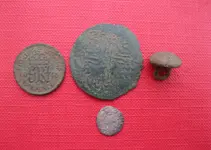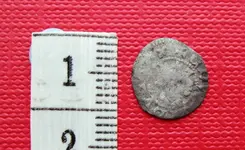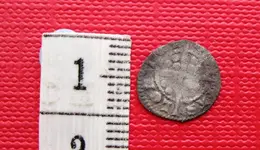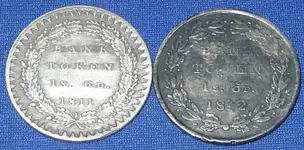robfinds
Silver Member
- Joined
- Dec 6, 2007
- Messages
- 3,529
- Reaction score
- 4,421
- Golden Thread
- 5
- Location
- Yorkshire England
- 🥇 Banner finds
- 5
- Detector(s) used
- XP Goldmax
In a recent (very recent) thread, mention was made of the colour old silver should be when first dug. Two finds from yesterday, show the great variation that can occur. The 1945 silver sixpence, is only 50% silver, whilst the 700 year plus Edward I farthing is probably more than 90% silver. I found both coins on the same field about 50 yards apart. If you discount the die wear on the medieval farthing, it looks newer than the 1945 sixpence. The large copper coin is a medieval French jeton, it shows the smallness of the farthing (one quarter of a penny). Robert.
Attachments
Upvote
12









